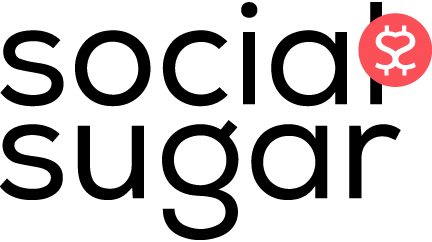How to Build an Effective Instagram Social Media Strategy
If you’re unsure whether creating an Instagram Social Media Strategy for your business is a good idea, you need to get planning and act now!
Instagram has over one billion active monthly users and over 80% of those users follow at least one business account.
So, if you’re not on Instagram, your competitors most definitely are.
If you want to drive sales and see results through Instagram, just having an account isn’t enough. You need to come up with a proper strategy.
You’ll want to start with a business account. Why? Because it gives you access to features you can’t use with a personal account, like:
Instagram insights
Instagram ads
Instagram shopping
Contact information and a call to action button on your profile.
You’ll also need to set goals, what is it you are trying to achieve? Do you want to increase brand awareness, get new leads, establish your brand or make sales? Setting goals is important, so you can come up with the right social media strategy in order to achieve them.
What to post will depend on your Instagram strategy
Instagram is all about aesthetics and if someone has tried to tell you differently, they are wrong. You will want to capture your audience’s attention with stunning visuals and compelling content. Your photos need to be high quality, well-lit and in focus.
You will want to establish a ‘brand look’ so when visitors come to your profile, they see a story of similar colours and great captions. This will help followers identify your brand while scrolling through their feed. If the image is pretty enough, it will also make them stop and take a look.
Depending on what you are trying to achieve, you could post behind the scenes of your business, quotes or text-based images, user generated content (UGC), influencer photos, instructional posts or even videos up to 60 seconds long.
Reflect on your goals and decide what type of post will benefit your business and help it grow.
Grow that Instagram Following!
Every brand must start somewhere, so if you are a new company you will be starting at 0. In the beginning you’ll want to tell your existing customers that you are now on Instagram – 73% of users say that they follow brands because they are interested in the product or service that is being offered.
You can use up to 30 hashtags in a single post, but realistically you’d want to use between 5 and 9 per post. Use hashtags that are relevant and are specific to your niche – that way you can target people who will be interested in your brand and hopefully gain them as followers.
70% of Instagram hashtags are also branded, so you’ll want to use them tactically – come up with one to represent your brand and get followers to use it when mentioning your products or services – you can then use these posts as UGC.
Try a Partnership with an Instagram Influencer
Influencers are a great way to build credibility while exposing your brand to a new audience. 94% of marketers say their social influencer strategy was effective for their companies. This is because influencers’ followers trust them, in fact 82% of people are likely to follow recommendations made by micro influencers, making it a cost-effective strategy.
It is recommended to look for influencers who have 10k to 50k followers as they have more authentic interactions with their followers and higher engagement rates.
Run Instagram Advertising
Two million businesses are already using Instagram ads and it’s time you joined them. Make sure you define your target audience like the location, demographic, interests and behaviours – you want to target an audience that are interested in your products or services.
Instagram ads appear in feeds like any normal post, so they don’t look like a typical ad.
With over one-billion monthly active users, there’s no denying Instagram’s power and reach. Coming up with the perfect strategy for your business will help you thrive and achieve your goals. Checkout our Facebook and Instagram lead generation results and case studies.
